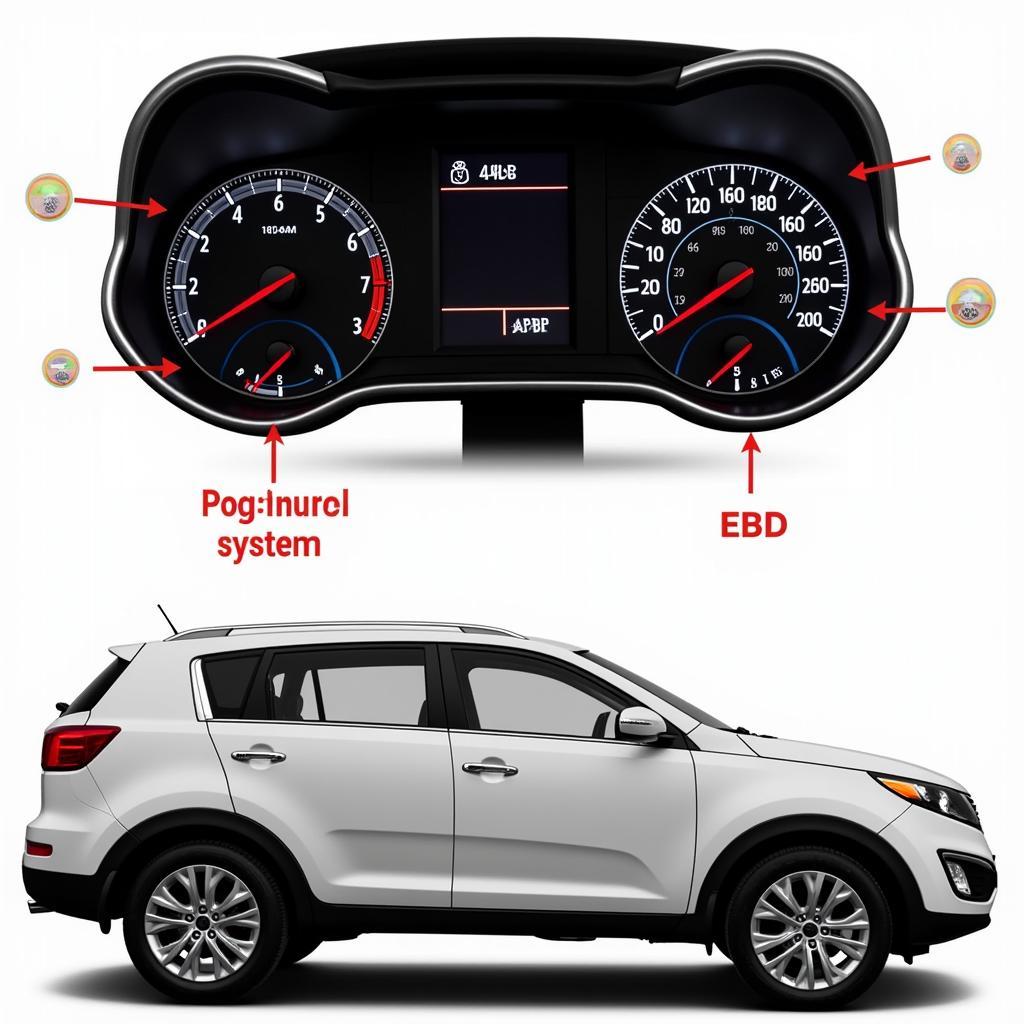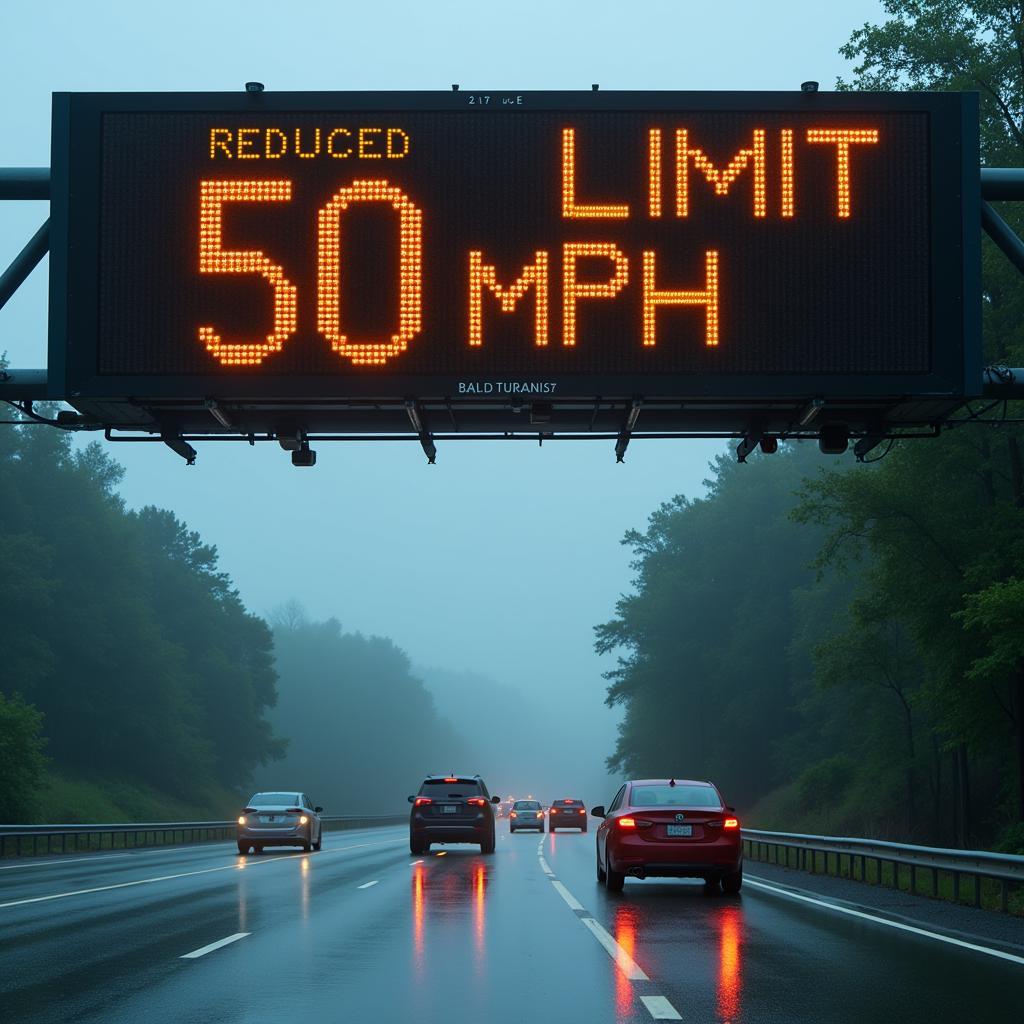The Kia Sportage is a popular compact SUV known for its style and practicality. However, like any vehicle, it can experience brake problems. Ignoring warning signs related to your Kia Sportage brakes can lead to dangerous situations and costly repairs. This comprehensive guide will walk you through common warning signs, their potential causes, and how to address them.
Recognizing the Warning Signs of Kia Sportage Brake Problems
Your Kia Sportage is equipped with various systems designed to alert you of potential brake problems. Understanding these warning signs is crucial for your safety and the longevity of your vehicle.
- Dashboard Warning Lights: The most obvious sign is the illumination of warning lights on your dashboard. These include:
- Brake System Warning Light: This light, often appearing as an exclamation mark within a circle, can signal several issues, including low brake fluid, a malfunctioning ABS system, or an engaged parking brake.
- Anti-lock Brake System (ABS) Warning Light: This light, typically displaying “ABS” or a similar symbol, indicates a problem with your anti-lock braking system.
- Electronic Brake-force Distribution (EBD) Warning Light: This light signals an issue with the system that distributes braking force to each wheel.
 Kia Sportage Dashboard with Illuminated Warning Lights
Kia Sportage Dashboard with Illuminated Warning Lights
- Physical Sensations While Braking: Beyond visual cues, your vehicle might communicate brake problems through physical sensations:
- Soft or Spongy Brake Pedal: This occurs when the brake pedal feels soft and sinks closer to the floor than usual before engaging the brakes. It often points to air in the brake lines or a failing master cylinder.
- Hard Brake Pedal: A hard brake pedal that requires excessive force to apply the brakes could indicate a problem with the brake booster or a blockage in the brake lines.
- Squealing or Grinding Noises: High-pitched squealing often indicates worn brake pads, while grinding noises suggest severe wear and potential metal-on-metal contact, which can damage your rotors.
- Pulling to One Side When Braking: If your Kia Sportage veers to one side when you apply the brakes, it could be due to uneven brake pad wear, a stuck caliper, or a problem with the hydraulic system.
- Vibrations in the Brake Pedal or Steering Wheel: Vibrations when braking can indicate warped brake rotors, requiring resurfacing or replacement.
“Ignoring brake warning signs is like ignoring a flashing ‘check engine’ light – it’s crucial to address them promptly to prevent further damage and ensure safety,” says John Miller, a senior automotive engineer specializing in braking systems.
Common Causes of Kia Sportage Brake Warning Lights
Several factors can trigger warning lights related to your Kia Sportage’s brakes. Identifying the root cause is essential for effective repair.
- Worn Brake Pads: Brake pads have wear indicators that create a squealing sound when they become thin, often triggering the brake system warning light.
- Low Brake Fluid: A leak in the brake lines or a failing master cylinder can lead to low brake fluid, activating the brake system warning light.
- Faulty ABS Sensors: Malfunctioning ABS sensors can disrupt the system’s ability to prevent wheel lockup, illuminating the ABS warning light.
- Defective Brake Caliper: A stuck or seized brake caliper can cause uneven brake pad wear, pulling to one side, and potentially trigger warning lights.
never ignore these 8 warning signs of brake problems les
What to Do When Your Kia Sportage’s Brake Warning Light Comes On
If any brake warning lights illuminate on your Kia Sportage’s dashboard, take immediate action:
- Pull Over Safely: As soon as you notice a brake warning light, safely pull over to the side of the road or into a parking lot.
- Check Your Brake Fluid: With the engine off and the vehicle parked on a level surface, carefully inspect the brake fluid reservoir under the hood. If the fluid level is low, add the recommended brake fluid type for your Kia Sportage.
- Avoid Driving: If the warning light persists or you notice any unusual braking behavior, it’s crucial to avoid driving and seek professional help. Continuing to drive with compromised brakes poses a significant safety risk.
Diagnosing and Addressing Brake Problems in Your Kia Sportage
Diagnosing and repairing brake problems requires specialized knowledge and tools. While some repairs, like replacing brake pads, can be handled by experienced DIYers, it’s generally recommended to seek professional assistance.
- Visual Inspection: A mechanic will begin by visually inspecting your Kia Sportage’s brake system for signs of wear, leaks, or damage.
- Diagnostic Scanning: Modern vehicles like the Kia Sportage have onboard computers that store diagnostic trouble codes (DTCs). A mechanic can use a scan tool to retrieve these codes, providing valuable insights into the specific brake system issue.
- Component Testing: Depending on the initial findings, the mechanic may test individual components, such as the brake calipers, ABS sensors, or the master cylinder, to determine their functionality.
Preventative Maintenance for Optimal Kia Sportage Brake Performance
“Regular maintenance is key to preventing brake problems,” advises Miller. “Just like changing your oil, keeping your brakes in check ensures safety and can save you money in the long run.”
To ensure your Kia Sportage’s brakes remain in optimal condition, follow these preventative maintenance tips:
- Regular Brake Inspections: Have your brakes inspected at least once a year or every 12,000 miles, whichever comes first.
- Timely Brake Pad Replacement: Replace your brake pads as soon as they wear down to the recommended thickness. Consult your owner’s manual or a trusted mechanic for the recommended replacement interval for your specific Kia Sportage model.
- Brake Fluid Flushes: Brake fluid absorbs moisture over time, which can reduce its effectiveness. Flush and replace your brake fluid every two years or as recommended by Kia.
- Inspect Brake Lines and Hoses: Check your brake lines and hoses for cracks, bulges, or leaks during regular maintenance.
2008 kia sportage parking brake & brake fluid warning light
Conclusion
Addressing warning signs related to your Kia Sportage brakes is vital for your safety and the well-being of your vehicle. Understanding these signs, their potential causes, and taking prompt action can help prevent accidents and costly repairs. Remember, regular maintenance and timely repairs are essential for optimal brake performance and peace of mind on the road.

